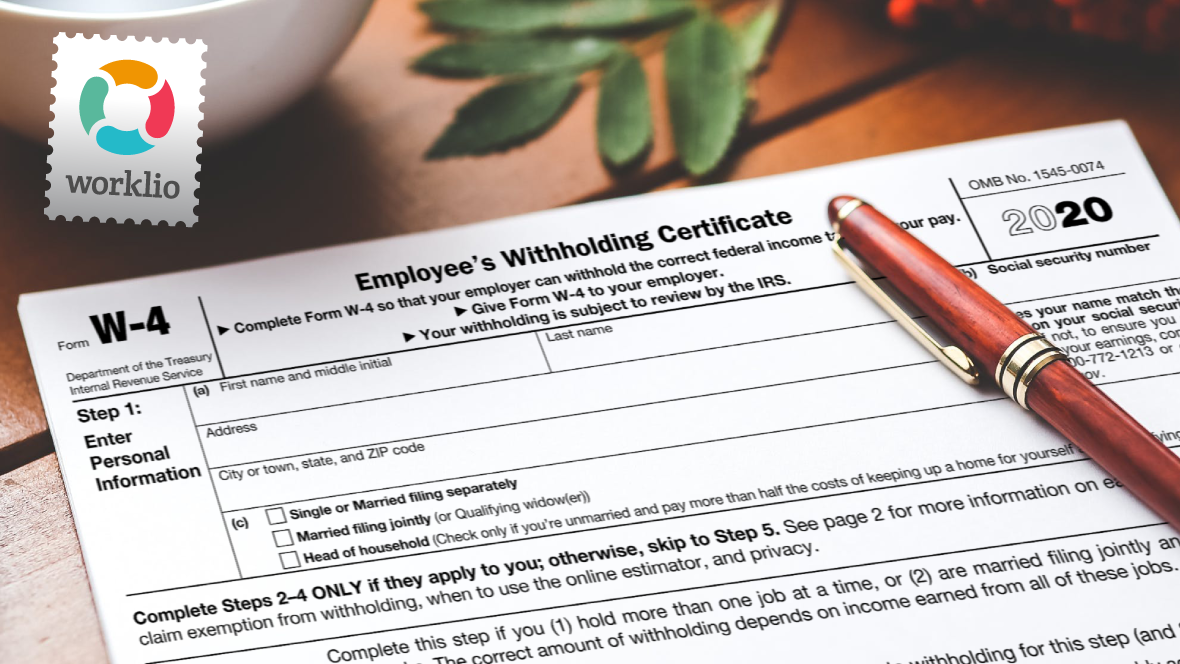
Form W-4 has been redesigned and updated. But many companies are still using paper copies when they could onboard employees electronically. What does your company do?
One of the first documents that new-hire employees fill out when they get on the job and one of the documents that should be updated every year is the Form W-4. For more than three decades, it has remained largely unchanged.
Not any more.
This year, the W-4 has gone through a significant update to make the withholding system more accurate and more transparent. As the IRS says, it will “ensure (a) smooth taxpayer experience.”
The changes are due to the 2017 Tax Cuts and Jobs Act, which adjusted a number of elements that affect every employee, including increasing standard deductions; eliminating personal exemptions; increasing child tax credits; limiting or discontinuing itemized deductions; adding credits for dependents; and updating tax rates and brackets. Treasury Secretary Steven T. Mnuchin called it “the most comprehensive tax legislation in more than 30 years.”
Companies around the country need to be using the new W-4 now. Here are the basics that you should know:
What is the Form W-4?
The W-4 allows employees to define how much should be withheld from their regular paychecks for federal taxes. Withholding the correct amount will avoid a big tax bill at the end of the year.
Who does this affect?
Every employee who starts a new job needs to fill out the new W-4, which went into effect on Jan. 1, 2020. Top Payroll and HRMS technology companies have their W-4s online to make the process faster and more efficient.
Plus, everyone who makes adjustments — perhaps for a new baby or a change in marital status — should upgrade to the new form.
Theoretically, every employee should update their W-4 every year; in practice, that doesn’t happen. For this reason, the old W-4 will need to be maintained, too. According to the IRS: Employees who have furnished Form W-4 in any year before 2020 are not required to furnish a new form merely because of the redesign. Employers will continue to compute withholding based on the information from the employee’s most recently furnished Form W-4.
What are the changes?
- The main change concerns Allowances. According to the IRS: Allowances are no longer used for the redesigned Form W-4. This change is meant to increase the transparency, simplicity, and accuracy of the form. In the past, the value of a withholding allowance was tied to the amount of the personal exemption. Due to changes in law, currently you cannot claim personal exemptions or dependency exemptions.
- Employees who have more than one job and married employees who file jointly with a working spouse need to account for their total earnings. Estimations for the number of allowances should be made with the IRS Withholding Estimator or the Multiple Jobs Worksheet, which is part of the form. Self-employed individuals are encouraged to use the IRS Withholding Estimator to best predict their taxes.
- The income levels and the tax credits have changed. If the total income level is $200,000 or less (or $400,000 or less if married and filing jointly) there is a tax credit of $2,000 for a dependent younger than 17 and a $500 tax credit for another type of dependent, like an older parent who is being taken care of in the family home.
- Additional amounts can be listed, including interest, dividends, and retirement income.
- Some may be able to claim exemption from Federal Withholdings.
***
How does your company handle the W-4? Is it still in paper form? Or do new-hire employees complete it online? How do existing employees update it each year?
See how Worklio handles the W-4. Get a personalize demo today.
Call 1-844-996-7554 or send an email to demo@worklio.com.